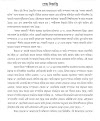TOP NEWS
6/recent/ticker-posts
Nagaland University researchers identify stingless Bee species
The Reveal
May 26, 2025
Kohima: Nagaland University researchers have identified stingless bee species that can be used to increase agricultural yield through pollination. The stingless bee species identified are Tetragonula iridipennis Smith and Lepidotrigona arcifera Cockerell). With the introduction of stingless bees as pollinators in different crops under greenhouse conditions, the yield and quality of produce increased several times in different crops. Stingless bees could be used for pollination without fear of being stung. They are known for their popular medicinal honey and pollination potential, which paves the way for the formulation of crop pollination calendars to benefit all stakeholders. The honey produced by the bees during the experiments also provided extra income besides good crop production. Nagaland University researchers found that the chilli crop, when pollinated by these bees, increases the crop production and quality as compared to crop where pollination is not accomplished. For supplementing the pollination deficit in chilli, stingless bees and honeybee species like A dorsata, A florea - and other wild bees like halictid bees, syrphid bees and Amegiella bees need to be conserved. In king-chilli the per cent fruit set was increased to 29.46 % over non pollinated crop (21.00 %). Likewise in Chilli (Capsicum annuum), the fruit set and healthy fruits were increased by 7.42 % and 7.92 % over non-pollinated crop. Similarly, seed weight which is an indicator of viability or germination increased by 60.74 % when pollinated by stingless bees. This is the maiden attempt to work out the pollination potential of stingless bees and quality production of honey, which led to increased income and sustainable livelihood. Earlier, it was difficult to use honeybees for pollination of crops (inadequate pollination) due to their natural attributes. This Research was led by Dr. Avinash Chauhan, Scientist and Principal Investigator (AICRP Honeybees & Pollinators), Department of Entomology, School of Agricultural Sciences, Nagaland University. The findings of his team have been published in several reputed, peer-reviewed journals, including International Journal of Farm Sciences. The present research was focused on developing the utilisation of stingless bees of genus Tetragonula spp. and Lepidotrigona spp. for the pollination of crops like cucumber, chilli, king chilli, ash-gourd, watermelon, citrus, tomato, pumpkin, brinjal and dragon fruit etc. The stingless bee colonies extracted from the forests and field areas as per the available methods, were multiplied scientifically to attain sufficient numbers of bee colonies for their utilisation as pollinators for crops under confined conditions. Besides these, their potential as pollinators on Mango, Guava, Rhus, Gooseberry and Ber etc was also observed and recorded. Stingless bees are reported from North East India, Eastern India and Southern Indian States, with recent additions from North, Central and Western Indian states. Unlike all the states where stingless bee rearing is still in nascent stages in North Eastern and Southern states, the stingless bees are reared in the traditional manner in homestead apiaries. However, in the last 7-10 years, the scientific domestication of these bees involving the development of scientific hives and mass multiplication of stingless bee colonies using queen cells is achieved in Nagaland and is extended to other states like Meghalaya and Arunachal Pradesh.
Labels
Ads
Side ads
Total Pageviews of the day
Support Independent Journalism
Ads
The Reveal (YouTube)
Popular Posts

8 Bollywood Films Banned in India for Bold Themes
August 07, 2025

Assam man held for Shillong school girl assaults
May 29, 2025

SPION celebrates International Nurses Day 2025
May 20, 2025
ASSAMESE NEWS
5/Assamese News/post-list
Ads
Random Posts
10/random/post-list
Last Ad
Popular Posts

Clarification: Dr. Prafulla Kr. Nath on allegation of Plagiarism
September 07, 2021

Dr. P.K. Nath speaks on the Allegation of Plagiarism against him
September 08, 2021

Tight security in Dhakuakhana on Independence Day
August 09, 2022

Freshmen Social of Dhakuakhana College of Teacher Education (B.Ed) held
September 24, 2022

40 bedded ICU to be set up at SMCH
September 08, 2021

Mega Oil Palm Plantation Drive Launched in Dima Hasao
June 22, 2025

Dhakuakhana Teachers Training College celebrates teachers day
September 05, 2022
Crafted with by TemplatesYard | Distributed by Gooyaabi Templates











0 Comments